230 results found for 'Model'. Prev |1|2|3|4|5|6|7|8|9|10 | Next | View 100 per page
Low relevance matches: 109 other results may be of interest to you. Show low relevance matches
Atomic Models - All matter is made of atoms which are composed of protons, neutrons and electrons; natural radioactivity arises from the decay of nuclei in atoms ACSSU182 Year 9 Physical Sciences
Energy Transfer - Energy transfer through different mediums can be explained using wave and particle models ACSBL029 Year 11 Biodiversity and the interconnectedness of life
Ecosystem dynamics - Models of ecosystem interactions (for example, food webs, successional models) can be used to predict the impact of change and are based on interpretation of and extrapolation from sample data (for example, data derived from ecosystem surveying techniques ACSBL085 Year 12 Heredity and continuity of life
DNA genes and the continuity of life - Frequencies of genotypes and phenotypes of offspring can be predicted using probability models, including Punnett squares, and by taking into consideration patterns of inheritance, including the effects of dominant, autosomal and sex-linked alleles and mu ACSBL110 Year 12 Maintaining the internal environment
Homeostasis - Homeostasis involves a stimulus response model in which change in external or internal environmental conditions is detected and appropriate responses occur via negative feedback; in vertebrates, receptors and effectors are linked via a control centre by n ACSCH018 Year 11 Chemical fundamentals
Properties and structure of atoms - Atoms can be modelled as a nucleus surrounded by electrons in distinct energy levels, held together by electrostatic forces of attraction between the nucleus and electrons; atoms can be represented using electron shell diagrams (all electron shells or val ACSCH032 Year 11 Chemical fundamentals
Properties and structure of materials - The characteristic properties of metals (for example, malleability, thermal conductivity, electrical conductivity) are explained by modelling metallic bonding as a regular arrangement of positive ions (cations) made stable by electrostatic forces of attra ACSCH056 Year 11 Molecular interactions and reactions
Intermolecular forces and gases - The shapes of molecules can be explained and predicted using three dimensional representations of electrons as charge clouds and using valence shell electron pair repulsion (VSEPR) theory ACSCH099 Year 12 Equilibrium acids and redox reactions
Chemical equilibrium systems - The relationship between acids and bases in equilibrium systems can be explained using the Brønsted Lowry model and represented using chemical equations that illustrate the transfer of hydrogen ions ACSCH103 Year 12 Equilibrium acids and redox reactions
Oxidation and reduction - A range of reactions, including displacement reactions of metals, combustion, corrosion, and electrochemical processes, can be modelled as redox reactions involving oxidation of one substance and reduction of another substance ACSCH104 Year 12 Equilibrium acids and redox reactions
Oxidation and reduction - Oxidation can be modelled as the loss of electrons from a chemical species, and reduction can be modelled as the gain of electrons by a chemical species; these processes can be represented using half equations ACSPH063 Year 11 Linear Motion and Waves
Linear motion and force - Newton’s Three Laws of Motion describe the relationship between the force or forces acting on an object, modelled as a point mass, and the motion of the object due to the application of the force or forces ACSPH076 Year 11 Linear Motion and Waves
Waves - A wave model explains a wide range of lightrelated phenomena including reflection, refraction, total internal reflection, dispersion, diffraction and interference; a transverse wave model is required to explain polarisation ACSPH139 Year 12 Revolutions in modern physics
Quantum theory - The Bohr model of the hydrogen atom integrates light quanta and atomic energy states to explain the specific wavelengths in the hydrogen spectrum and in the spectra of other simple atoms; the Bohr model enables line spectra to be correlated with atomic en ACSCH031 Year 11 Chemical fundamentals
Properties and structure of materials - The properties of ionic compounds (for example, high melting point, brittleness, ability to conduct electricity when liquid or in solution) are explained by modelling ionic bonding as ions arranged in a crystalline lattice structure with forces of attract ACSPH071 Year 11 Linear Motion and Waves
Waves - The mechanical wave model can be used to explain phenomena related to reflection and refraction ACSPH074 Year 11 Linear Motion and Waves
Waves - Light exhibits many wave properties; however, it cannot be modelled as a mechanical wave because it can travel through a vacuum ACSPH075 Year 11 Linear Motion and Waves
Waves - A ray model of light may be used to describe reflection, refraction and image formation from lenses and mirrors ACSPH140 Year 12 Revolutions in modern physics
Quantum theory - On the atomic level, energy and matter exhibit the characteristics of both waves and particles
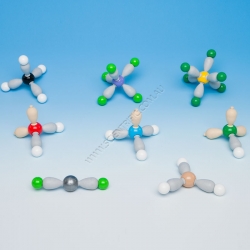
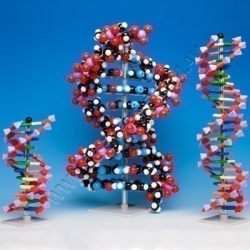
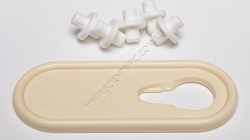

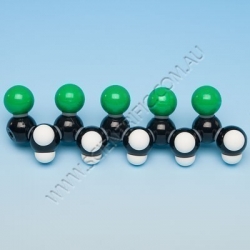
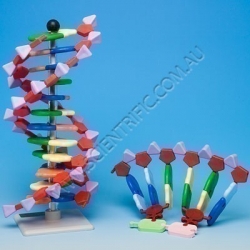


230 results found for 'Model'. Prev |1|2|3|4|5|6|7|8|9|10 | Next | View 100 per page
Low relevance matches: 109 other results may be of interest to you. Show low relevance matches
Curriculum resources related to 'Model'
ACSSU177 Year 9 Chemical SciencesAtomic Models - All matter is made of atoms which are composed of protons, neutrons and electrons; natural radioactivity arises from the decay of nuclei in atoms ACSSU182 Year 9 Physical Sciences
Energy Transfer - Energy transfer through different mediums can be explained using wave and particle models ACSBL029 Year 11 Biodiversity and the interconnectedness of life
Ecosystem dynamics - Models of ecosystem interactions (for example, food webs, successional models) can be used to predict the impact of change and are based on interpretation of and extrapolation from sample data (for example, data derived from ecosystem surveying techniques ACSBL085 Year 12 Heredity and continuity of life
DNA genes and the continuity of life - Frequencies of genotypes and phenotypes of offspring can be predicted using probability models, including Punnett squares, and by taking into consideration patterns of inheritance, including the effects of dominant, autosomal and sex-linked alleles and mu ACSBL110 Year 12 Maintaining the internal environment
Homeostasis - Homeostasis involves a stimulus response model in which change in external or internal environmental conditions is detected and appropriate responses occur via negative feedback; in vertebrates, receptors and effectors are linked via a control centre by n ACSCH018 Year 11 Chemical fundamentals
Properties and structure of atoms - Atoms can be modelled as a nucleus surrounded by electrons in distinct energy levels, held together by electrostatic forces of attraction between the nucleus and electrons; atoms can be represented using electron shell diagrams (all electron shells or val ACSCH032 Year 11 Chemical fundamentals
Properties and structure of materials - The characteristic properties of metals (for example, malleability, thermal conductivity, electrical conductivity) are explained by modelling metallic bonding as a regular arrangement of positive ions (cations) made stable by electrostatic forces of attra ACSCH056 Year 11 Molecular interactions and reactions
Intermolecular forces and gases - The shapes of molecules can be explained and predicted using three dimensional representations of electrons as charge clouds and using valence shell electron pair repulsion (VSEPR) theory ACSCH099 Year 12 Equilibrium acids and redox reactions
Chemical equilibrium systems - The relationship between acids and bases in equilibrium systems can be explained using the Brønsted Lowry model and represented using chemical equations that illustrate the transfer of hydrogen ions ACSCH103 Year 12 Equilibrium acids and redox reactions
Oxidation and reduction - A range of reactions, including displacement reactions of metals, combustion, corrosion, and electrochemical processes, can be modelled as redox reactions involving oxidation of one substance and reduction of another substance ACSCH104 Year 12 Equilibrium acids and redox reactions
Oxidation and reduction - Oxidation can be modelled as the loss of electrons from a chemical species, and reduction can be modelled as the gain of electrons by a chemical species; these processes can be represented using half equations ACSPH063 Year 11 Linear Motion and Waves
Linear motion and force - Newton’s Three Laws of Motion describe the relationship between the force or forces acting on an object, modelled as a point mass, and the motion of the object due to the application of the force or forces ACSPH076 Year 11 Linear Motion and Waves
Waves - A wave model explains a wide range of lightrelated phenomena including reflection, refraction, total internal reflection, dispersion, diffraction and interference; a transverse wave model is required to explain polarisation ACSPH139 Year 12 Revolutions in modern physics
Quantum theory - The Bohr model of the hydrogen atom integrates light quanta and atomic energy states to explain the specific wavelengths in the hydrogen spectrum and in the spectra of other simple atoms; the Bohr model enables line spectra to be correlated with atomic en ACSCH031 Year 11 Chemical fundamentals
Properties and structure of materials - The properties of ionic compounds (for example, high melting point, brittleness, ability to conduct electricity when liquid or in solution) are explained by modelling ionic bonding as ions arranged in a crystalline lattice structure with forces of attract ACSPH071 Year 11 Linear Motion and Waves
Waves - The mechanical wave model can be used to explain phenomena related to reflection and refraction ACSPH074 Year 11 Linear Motion and Waves
Waves - Light exhibits many wave properties; however, it cannot be modelled as a mechanical wave because it can travel through a vacuum ACSPH075 Year 11 Linear Motion and Waves
Waves - A ray model of light may be used to describe reflection, refraction and image formation from lenses and mirrors ACSPH140 Year 12 Revolutions in modern physics
Quantum theory - On the atomic level, energy and matter exhibit the characteristics of both waves and particles
Products related to 'Model'
Molymod 2 dimensional beige lone pair electron paddles - Pack of 10
MOLYMOD 2D LONE PAIR ELECTRON BEIGE PADDLE-SHAPED
A pack of 10 beige 2-dimensional paddle-shaped, lone pair electrons.
Used in Molymod® sets MMS-003, MMS-004 and MMS-009
A quality, genuine Molymod® product fully compatible with all other genuine Molymod® pro...
Order code: MO-10-10
Molymod 3D Pear Shaped Pair Electrons Beige
MOLYMOD 3D LONE PAIR ELECTRON BEIGE PEAR-SHAPED
A pack of 10 beige 3-dimensional pear-shaped, lone pair electrons used in
MMS-002 Molymod Advanced Chemistry Set.
Note: Sometimes this replacement pack is listed as product code MO-304-10
A quality, genuine Molymod®...
Order code: MO-304

Molymod Shapes of Molecules Collection
MOLYMOD SHAPES OF MOLECULES COLLECTION
This set contains sufficient parts to make the eight molecular orbit models pictured of some common simple compounds.
The different shapes are examples of the orientations of the bonds and cover coordination numbers 1 to 6.
Coo...
Order code: MOS-902-8

Molymod Colourless Spacer
MOLYMOD COLOURLESS SPACER
A pack of 10 clear structural spacers for Molymod DNA models.
A quality, genuine Molymod® product fully compatible with all other genuine Molymod® products.
.
Order code: AMDNA-SPACER-10
Molymod Cap
A genuine Molymod® product NOT a cloned look-a-like.
Cap for top of display (white), pack of 2.
Order code: CAP

Molymod Short White Link for Compact Bonds
MOLYMOD SHORT WHITE LINKS
A pack of 25 white 2mm short links used for compact bonds.
Use the SLRT1 Short Link Remover Tool to easily extract these small plastic bonds when dismantling your Molymod® molecular models:
1. Lower the tool onto the link with t...
Order code: ML-10-25
Molymod Medium Purple Link
MOLYMOD MEDIUM PURPLE LINKS
A pack of 25 purple 19mm medium links for single bonds.
A quality, genuine Molymod® product fully compatible with all other genuine Molymod® products.
Order code: ML-11-25
Molymod Medium Grey Link
MOLYMOD MEDIUM GREY LINKS
A pack of 25 grey 19mm medium links for single bonds.
A quality, genuine Molymod® product fully compatible with all other genuine Molymod® products.
Order code: ML-12-25
Molymod Double/Triple Bonds Long Grey
MOLYMOD LONG GREY LINKS
A pack of 25 grey 30mm long flexible links for double or triple bonds.
A quality, genuine Molymod® product fully compatible with all other genuine Molymod® products.
Order code: ML-13-25
Molymod Double/Triple Bonds Long Purple
MOLYMOD LONG PURPLE LINKS
A pack of 25 purple 30mm long flexible links for double or triple bonds.
A quality, genuine Molymod® product fully compatible with all other genuine Molymod® products.
Order code: ML-14-25
Molymod Non Visible Links Neutral Plastic
MOLYMOD NON-VISIBLE LINKS
A pack of 25 short non-visible neutral plastic links.
Use the SLRT1 Short Link Remover Tool to easily extract these small plastic bonds when dismantling your Molymod® molecular models:
1. Lower the tool onto the link with the to...
Order code: ML-15-25
Molymod Medium White Link
MOLYMOD MEDIUM WHITE LINKS
A pack of 25 white 19mm medium links for single bonds.
A quality, genuine Molymod® product fully compatible with all other genuine Molymod® products.
Order code: ML-16-25
Molymod V-Link Grey for Tight Small Ring
MOLYMOD V-LINK GREY
A pack of 25 grey V-links used for tight small ring structures.
A quality, genuine Molymod® product fully compatible with all other genuine Molymod® products.
Order code: ML-20-25

Molymod Short Link Remover Tool
MOLYMOD SHORT LINK REMOVER TOOL
A replacement for the tool supplied in every Molymod® set that represents compact bonds with
• ML-10-25 Short White Links, or
• ML-15-25 Non-Visible Neutral Links
Use this tool to easily extract these small plastic bonds when dism...
Order code: SLRT1
Molymod Sulphur Yellow 4 Holes 23mm 109 Tetrahedral
23mm MOLYMOD SULPHUR ATOM 4 HOLES
A pack of 10 yellow Sulphur atoms 23mm diameter and with 4 holes angled at 109° tetrahedral.
A quality, genuine Molymod® atom fully compatible with other Molymod® products.
Order code: MA-403-10
Molymod Boron Beige 4 Holes 23mm 109 Tetrahedral
23mm MOLYMOD BORON ATOM 4 HOLES
A pack of 10 beige Boron atoms 23mm diameter and with 4 holes angled at 109° tetrahedral.
A quality, genuine Molymod® atom fully compatible with other Molymod® products.
Order code: MA-408-10
Molymod Generic Atom Dsp3 5 Holes Brown
23mm MOLYMOD GENERIC BROWN DSP3 ATOM 5 HOLES
A pack of 10 dark brown dsp3 hybrid atoms 23mm diameter and with 5 holes angled at 90° and 120° tribipyramidal.
A quality, genuine Molymod® product fully compatible with all other genuine Molymod® products....
Order code: MA-514-10
Molymod Generic Atom d2sp3 6 Holes Beige
A genuine Molymod® product NOT a cloned look-a-like.
Spare Molymod® Atoms - Pack of 10.
Element: Generic (Boron)
Colour: Beige
Holes: 5
Angles/Type: 90, octahedral
Diameter: 23mm
Order code: MA-615-10
Molymod Phosphorus Purple 6 Holes 23mm 90 Octahedral
23mm MOLYMOD PHOSPHORUS ATOM 3 HOLES
A pack of 10 purple Phosphorus atoms 23mm diameter and with 6 holes angled at 90° octahedral.
A quality, genuine Molymod® atom fully compatible with other Molymod® products.
Order code: MA-618-10
Molymod Oxygen Red 5 Holes 23mm 90/120 Tribipyramidal
23mm MOLYMOD OXYGEN ATOM 5 HOLES
A pack of 10 red Oxygen atoms 23mm diameter and with 5 holes angled at 90° and 120° tribipyramidal.
A quality, genuine Molymod® product fully compatible with all other genuine Molymod® products.
Order code: MA-516-10
Molymod Halogen Green 4 Holes 23mm 109 Tetrahedral
23mm MOLYMOD HALOGEN ATOM 4 HOLES
A pack of 10 green Halogen atoms 23mm diameter and with 4 holes angled at 109° tetrahedral.
A quality, genuine Molymod® atom fully compatible with other Molymod® products.
Order code: MA-406-10

Molymod Hydrogen White Atomlink 15mm
15mm MOLYMOD HYDROGEN ATOMLINK™
A pack of 10 white Hydrogen atoms that are a solid 15mm diameter half dome, with a short stalk instead of a hole.
A quality, genuine Molymod® product fully compatible with all other genuine Molymod® products.
Order code: MAL-10-10

Molymod Mini DNA Spare Dark Blue Adenine
MOLYMOD ADENINE DARK BLUE
A pack of 6 dark blue Adenine units for Molymod DNA and RNA models.
A quality, genuine Molymod® product fully compatible with all other genuine Molymod® products.
Order code: AMDP-ADE-6

Molymod Mini DNA Spare Yellow Cytosine
MOLYMOD CYTOSINE YELLOW
A pack of 6 yellow Cytosine units for Molymod DNA and RNA models.
A quality, genuine Molymod® product fully compatible with all other genuine Molymod® products.
Order code: AMDP-CYT-6

Molymod Mini DNA Spare Red Deoxyribose
MOLYMOD DEOXYRIBOSE RED
A pack of 6 red Deoxyribose units for Molymod DNA and RNA models.
A quality, genuine Molymod® product fully compatible with all other genuine Molymod® products.
Order code: AMDP-DO-RIB-6
230 results found for 'Model'. Prev |1|2|3|4|5|6|7|8|9|10 | Next | View 100 per page



 ,
,